Anyone traveling to Hawaii should also learn a bit about Hawaii’s art and culture. Hawaiian art has a fascinating history.
Hawaiian art is divided into three main periods of art: pre-European art, Nonnative Hawaiian Art, and Hawaiian Art With Western Influences. After Captain Cook arrived in Hawaii in 1773, traditional Hawaiian art changed as Western culture started to influence Hawaiian art. The Volcano School of Art developed in Hawaii in the late 1800s when the artist’s work became impacted by the live volcanic eruptions in Hawaii.
Table of Contents
- Exploring the Rich Tapestry of Hawaiian Art and Culture on Your Journey to Hawaii
- 1 – There are 3 Main Periods of Hawaiian Art
- 2 – Hawaiian’s Art And Traditional Polynesian Ar
- 3 – Traditional Hawaiian Kapa Fabric
- 4 – Kakau – Traditional Hawaiian Tattoo Art
- 5 – Western Influences Changed Hawaiian Art
- 6 – Hawaiian Quilting Taught By Christian Missionaries
- 7 – The Volcano School of Hawaiian Art
- 8 – Hawaii Has Two King Kamehameha Statues
- 9 – The Hawaiian “Percent For Art” Law
- 10 – View Hawaiian Art Collections in Hawaii and Germany
- 11 – Word For Art in the Hawaiian Language
- 12 Key Reasons to Safeguard Hawaiian Art and Culture
- Related Content
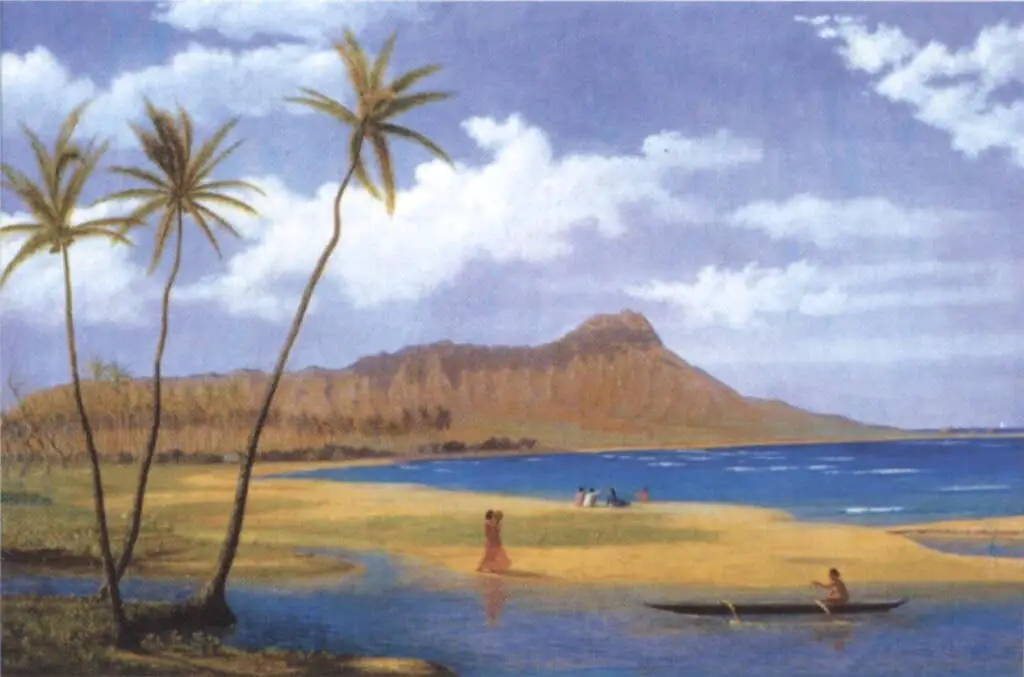
Exploring the Rich Tapestry of Hawaiian Art and Culture on Your Journey to Hawaii
For those planning a trip to Hawaii, delving into the island’s art and culture offers a deeper understanding of its captivating history. Hawaiian art, a reflection of the island’s diverse heritage, can be categorized into three distinct periods: pre-European art, Nonnative Hawaiian Art, and Hawaiian Art influenced by Western elements.
The arrival of Captain Cook in 1773 marked a pivotal moment in Hawaiian artistic evolution, as Western culture began to intertwine with traditional Hawaiian practices. A notable development in this era was the emergence of the Volcano School of Art in the late 1800s, inspired and shaped by the dramatic and living volcanic landscapes of Hawaii.
This artistic journey through time highlights the rich, multifaceted nature of Hawaiian art and its continuous evolution through external influences and natural wonders. Below Are 11 Interesting Facts About Traditional Hawaiian Art:
1 – There are 3 Main Periods of Hawaiian Art
Hawaiian art is usually divided into three main groups. Each of these groups is defined as:
Pre-European Art –
Pre-European art was produced before any Westerners came to Hawaii. This Hawaiian art era was about the indigenous art forms before 1773, when Captian James Cook arrived in the Hawaiian islands. Before Capitan Cook arrived in Hawaii, the islands’ art was very similar to a lot of the art in other parts of Polynesia.
Non-Native Hawaiian Art –
Non-native Hawaiian art began when the first Westerners arrived in Hawaii. Some of the first Westerners to come in Hawaii were artists.
Hawaiian Art With Western Influences –
Once Westerners came to the islands, Hawaiian art started incorporating Western materials for Hawaiian and Hawaiian Artists.
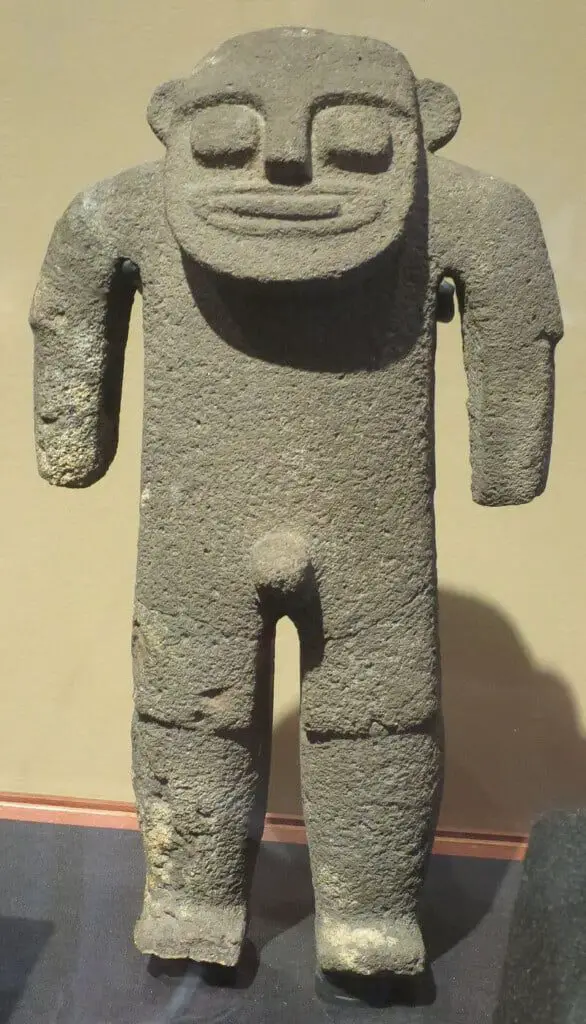
2 – Hawaiian’s Art And Traditional Polynesian Ar
Before Captain Cook arrived at the Hawaiian islands, most of the art produced in Hawaii was wood carvings, tattoos, feather work, stone carvings, petroglyphs, and barkcloth known as Kapa cloth; the petroglyph art is stone carvings carved into some of the Hawaiian rocks. During this period, the Hawaiian islands had no metal or woven cloth.
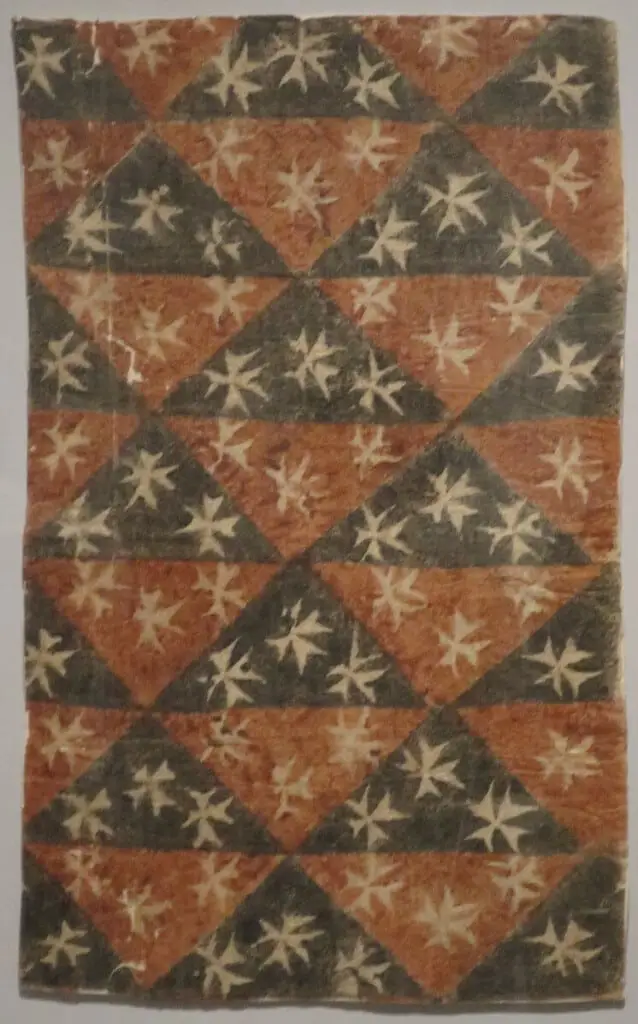
3 – Traditional Hawaiian Kapa Fabric
One of the traditional Hawaiian art forms is the Kapa fabric. Kapa fabric is produced by native Hawaiian artisans from the fibers of certain trees and shrubs. Kapa fabric is very similar to the tapa cloth found elsewhere in Polynesia.
Kapa cloth primarily combines basic bold yet linear elements and forms. The Kapa fabric was mainly used for traditional Hawaiian clothing. Most of the Kapa cloth work was done by women; the mothers would pass down this art form to their daughters.
Besides the museum, you can see some Kapa or Tapa cloth at the Polynesia Cultural Center in Laie, Hawaii. In some of their cultural villages, you can see how this kind of cloth was worn or used in Polynesia. To find out more about how you can visit the Polynesian Cultural Center, click here.
4 – Kakau – Traditional Hawaiian Tattoo Art
Another interesting traditional Hawaiian art form was Kakau or the Hawaiian art of tattooing. Hawaii was governed by a strict Kapu or a taboo cultural system; the tattoos became part of this system.
The tattoos also served as part of the recognition for the class or caste system. The tattoos were for ornamentation, class distinction, and to help the health and spiritual well-being of those who had worn the body art.
The images used with Kakau or Hawaii tattoo art varied from greatly respected and feared lizards and symbols like the Hawaiian crescent fan. Intricate patterns tattooed on Hawaiian men’s arms, legs, torso, and face would mimic woven reeds or other natural forms. Women were generally tattooed on the hand, fingers, wrist, and sometimes the tongue.
Not just anyone could apply these tattoos; highly skilled Kakuna art experts applied the tattoos. The design also varied as much as the Kakau tattoo artist’s ability and experience. The entire process of the Kakau tattoo art was also a highly guarded secret.
Eventually, the Kakau Hawaiian system of tattoo art began to collapse. The ancient ways of this traditional tattoo art began to vanish from the islands.
As more European settlers and missionaries came to the islands, the Kakau tattoo art was discouraged and even suppressed until many of this traditional art form’s designs and techniques eventually faded.
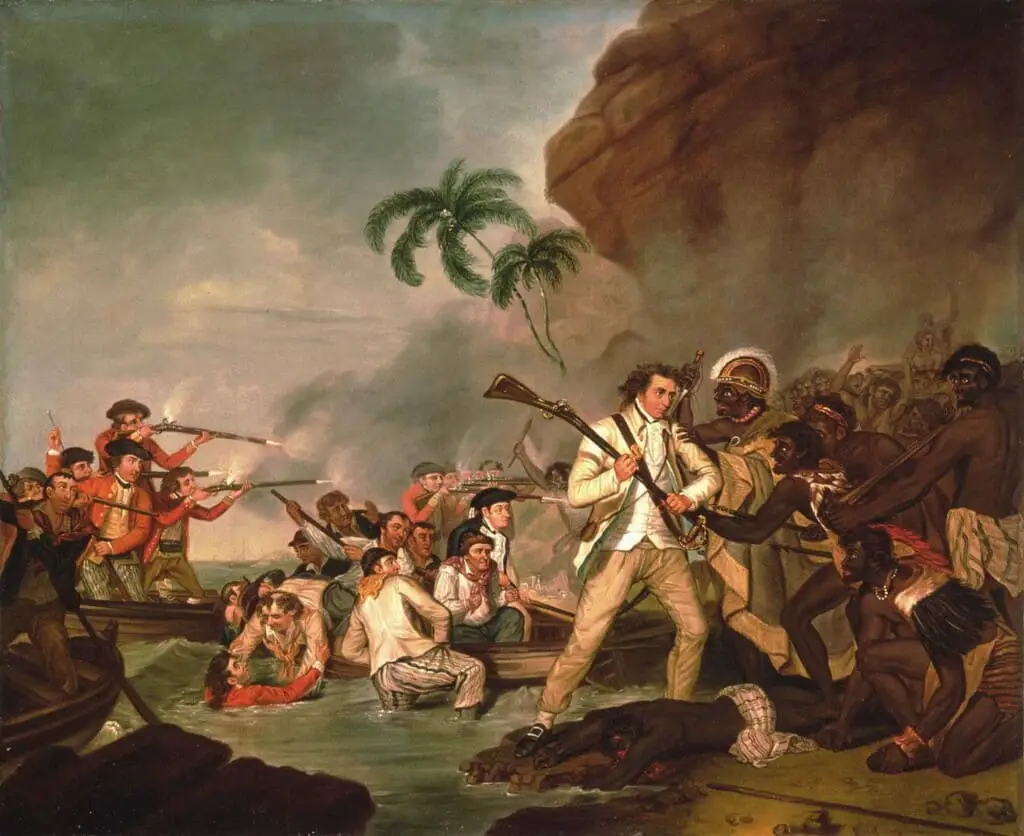
5 – Western Influences Changed Hawaiian Art
The arrival of Westerners to Hawaii and the subsequent formation of Hawaii into a state of the United States has greatly influenced the art of native Hawaiians. Much of the art produced by the native Hawaiians and long-term Hawaii residents now incorporates Western materials and ideas.
Even today, most Hawaiian artists will keep their subject matter distinctively Hawaiian while incorporating the art with materials from the West. That is why most of the art produced in Hawaii integrates an artistic melting of traditional Hawaiian art and Western art.
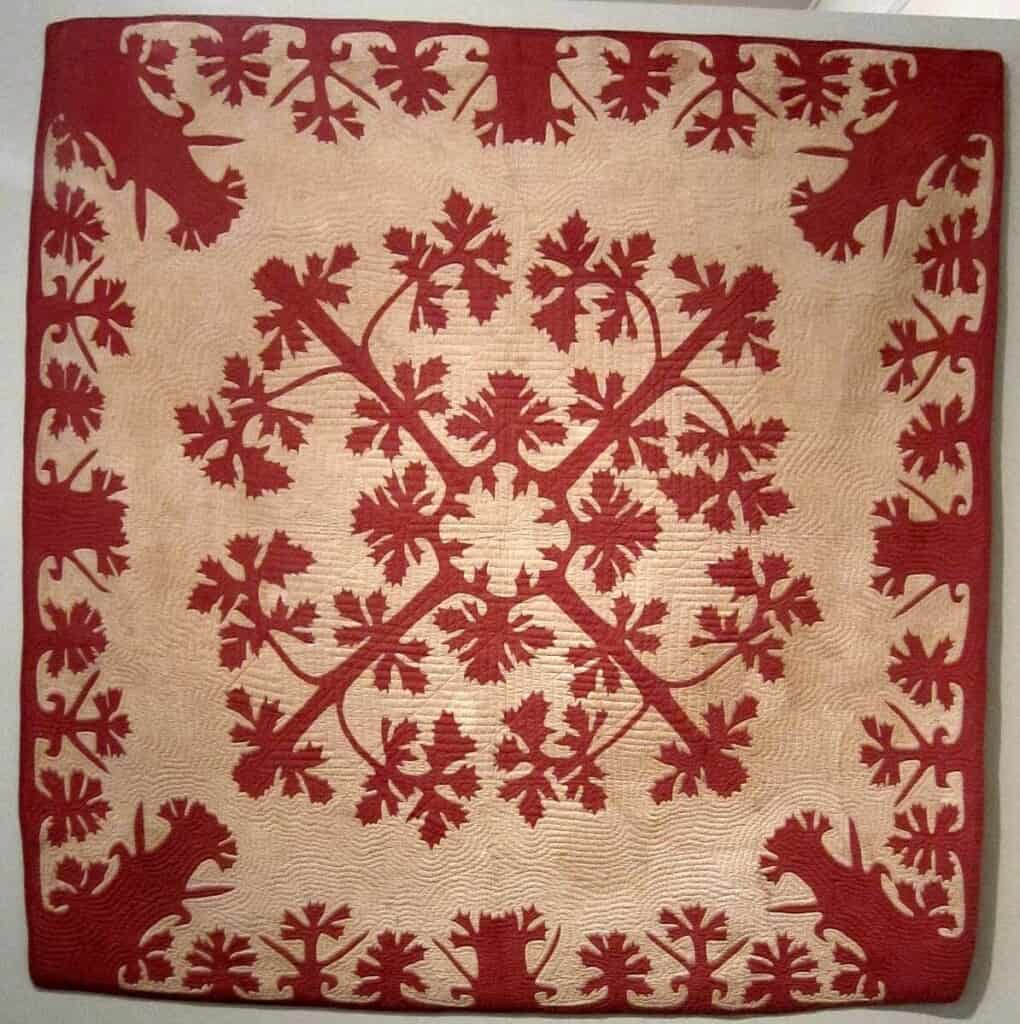
6 – Hawaiian Quilting Taught By Christian Missionaries
The Hawaiian quilt is an example of an art form that came to Hawaii after the Westerners first came to Hawaii. The missionaries who came to Hawaii in the early 1800s taught the Hawaiian women the art of quilting.
Many of the earliest Hawaiian quilts go back as early as the 1820s; the artisans pieced together these early Hawaiian quilts with old scraps of fabric.
It was not until the 1870s that the Hawaiian quilt story really began to unfold. The Hawaiian quilts are usually two colors: one color for the background and one color for the appliqué.

7 – The Volcano School of Hawaiian Art
The Volcano School of Hawaiian art was formed by a group of non-native Hawaiian artists who started to paint dramatic scenes from Hawaii’s two active volcanos. These Western artists were fascinated with Hawaii’s intermittently active volcanos in Kilauea and Mauna Loa in the 1860s and 1890s.
Getting to the volcano to paint the volcanic eruptions was a considerable feat. The volcano in Kilauea was a two or three-day round-trip journey on horseback. One of the most important artists of this Volcano School was Jules Tavernier (1844 – 1889).
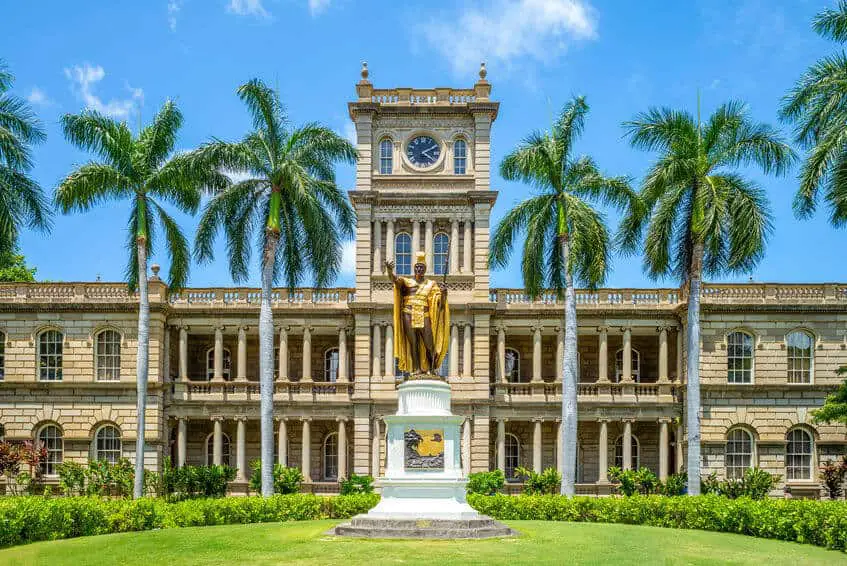
8 – Hawaii Has Two King Kamehameha Statues
In 1878, Walter M. Gibson, a member of the Hawaiian government, wanted to commemorate the hundred-year arrival of Captain Cook to the Hawaiian islands. The legislature approved a statue to be made of King Kamehameha for $10,000. They hired Thomas R. Gould, a Boston sculptor living in Florence, Italy, to create King Kamehameha’s statue.
The King Kamehameha statue was too late for the hundred-year-old anniversary celebrations. In 1883, the King Kamehameha statue was placed onboard a sailing ship to Hawaii.
Near the Falkland Islands, the shipwrecked and the King Kamehameha statue was thought to be lost at sea. As the King Kamehameha statue was insured, the Hawaii government received $12,000 in the insurance payout, and a second casting of the statue was commissioned immediately.
Before the second statue arrived in Hawaii, the original King Kamehameha statue was recovered from the sea by some Falkland Islanders. These Falkland Islanders sold the statue to the Captain of the shipwreck for $500, and the Captain then sold it onto Walter M Gibsons for $875.
Hawaii now has two King Kamehameha statues. The original statue stands near Kings Kamehameha’i Place in Kapa’au on the Big Island of Hawaii. The 2nd statue stands in front of the Ali’iolani Hale, now home to Hawaii’s Supreme Court.
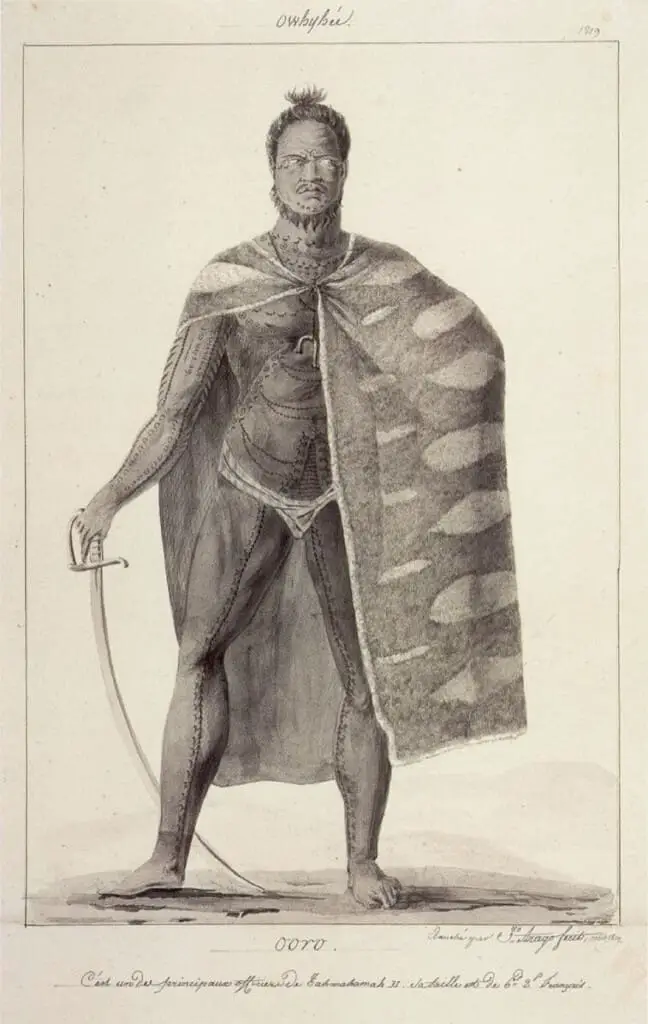
9 – The Hawaiian “Percent For Art” Law
In 1967, Hawaii became the first state in the United States to implement a “Percent For Art” law. This law states that 1% of the construction cost of any new public school or state building would be designated to acquire artwork. These works of art could be purchased by commission or by an outright purchase.
10 – View Hawaiian Art Collections in Hawaii and Germany
There are four major locations in that world where you can view collections of Hawaiian art. Three locations are in Honolulu, Hawaii, on Oahu’s island, and the last is in Germany.
The Honolulu Museum of Art –
The Honolulu Museum of Art started as a private collection and has now evolved to be one of the finest art museums in the United States. The museum is in a beautiful location in the heart of Honolulu, Hawaii.
You can find out more about the Honolulu Museum of Art by clicking here.
The Bishop Museum –
The Bishop Museum is also in Honolulu and is a wonderful museum to learn about Hawaiian art and culture.
You can find out more about The Bishop Museum by clicking here.
The Hawaii State Art Museum –
The Hawaii State Art Museum is also located in Honolulu. The Hawaii State Art Museum calls itself the “people’s art museum,” so admission to the museum is free of charge.
The museum has over 7000 works of art and a lovely sculpture garden. The museum is known for its contemporary Hawaiian Art.
On the Hawaii State Art Museum website, you can take a virtual video tour; you can find out more about this museum by clicking here.
The Georg-August University in Göttingen, Germany –
The Cook/Forester Collection at the Georg-August University in Göttingen, Germany, has some wonderful South Sea Collection pieces, including items from Hawaii—Captain Cook’s worldwide voyages from (1768 – 1780).
TwoGermans – Johann Reinhold and Georg Forster, acquired a comprehensive collection of cultural and artistic artifacts and other information. Amazingly, the Georg-August University in Göttingen, Germany, has over 500 South Sea items in their Cook/Forester collection. You can find out more about this collection by clicking here.

11 – Word For Art in the Hawaiian Language
The word for art in the Hawaiian language is Hana noʻeau. Here are some other words in the Hawaiian language:
| English Word | Hawaiian Word |
| Art | Hana noʻeau |
| Artist | Kaha kiʻi. |
| Artistic | Noʻeau, ʻike hana noʻeau. |
| Artwork | Pāheona |
| Decorate (to make) | Hoʻoheona |
Hawaiian art is such an exciting kind of art. Not only is it rich in the history of Polynesia, but it is also an art that has changed and evolved as the Hawaiian islands have also changed and evolved.
12 Key Reasons to Safeguard Hawaiian Art and Culture
Preserving Hawaiian art and culture is crucial for numerous reasons, reflecting the importance of maintaining Hawaii’s unique heritage and identity. Here are twelve key reasons why this preservation is essential:
- Cultural Identity: Hawaiian art and culture form a vital part of the identity of native Hawaiians and the Hawaiian community at large. Preserving them helps maintain a sense of identity and belonging.
- Historical Significance: Hawaiian culture and art represent centuries of history and tradition. Preserving them ensures that this rich historical legacy is not lost to future generations.
- Educational Value: Hawaiian art and culture are important educational tools that can teach both Hawaiians and people worldwide about the history, traditions, and values of the Hawaiian people.
- Cultural Diversity: In a globalizing world, preserving unique cultural elements like Hawaiian art ensures the continuation of cultural diversity.
- Tourism: Hawaiian art and culture are significant tourist attractions, contributing to the local economy and providing a source of income for artists and cultural practitioners.
- Inspiration for Contemporary Art: Traditional Hawaiian art and cultural practices provide inspiration for contemporary artists and creators, both in Hawaii and globally.
- Environmental Awareness: Much of Hawaiian culture is deeply connected to the environment and nature. Preserving these aspects of the culture can promote ecological awareness and respect for nature.
- Community Pride: A strong sense of cultural heritage fosters community pride and strengthens social bonds within the Hawaiian community.
- Language Preservation: Art and culture are closely tied to language. Preserving Hawaiian art also helps in the efforts to preserve and revitalize the Hawaiian language.
- Cultural Exchange: Preserving Hawaiian culture facilitates cultural exchange with other communities and cultures, fostering mutual respect and understanding.
- Spiritual and Emotional Connection: For many Hawaiians, their art and culture have a deep spiritual and emotional significance, offering a sense of connection to their ancestors.
- Resilience and Adaptation: Preserving Hawaiian culture and art demonstrates resilience and adaptation, as these cultural forms have evolved and survived despite historical challenges and changes.
Preserving Hawaiian art and culture is not just about maintaining the past; it’s also about enriching the present and inspiring the future, ensuring that the unique Hawaiian heritage continues to thrive and influence future generations.
Listen To Our Podcast About Art Aloha: Exploring the Wonders of Traditional Hawaiian Art
Below or By clicking here.

Anita Louise Art is dedicated to art education, great artists, and inspiring others to find and create their art. We love art that uplifts and inspires. #ArtToMakeYouSmile! #ArtToMakeYouHappy!
If you want to see any of my art, you can find out more by clicking here. If you are interested in what inspires me and my paintings, you can discover more by clicking here.
We have a free newsletter and would love you to be part of our community; you can subscribe to the newsletter by clicking here. If you have any questions, I would be happy to talk to you. You can reach me, Anita, by clicking here.
Subscribe to our Anita Louise Art YouTube Channel filled with great videos and information, by clicking here.
Join us for our podcast “5 Minutes With Art.” Spend just 5 minutes a week with us to discover and learn about great art and artists. You can find out more about our podcast by clicking here.
Related Content
What Is A Japanese Woodblock Print?
A Japanese woodblock print is, as the name implies, a print that is made by using carved woodblock and applying ink on the woodblocks to print a design on paper. The Japanese woodblock artists use woodblocks to print artistic prints and even books. Artists have used the woodblock print technique in Japan for hundreds of years.
You can learn more by reading What Is A Japanese Woodblock Print? by clicking here.
What Is The Main Difference Between Japanese and Chinese Art?
The main differences between Japanese and Chinese art include the materials used and how they were executed. Religion played a major role in influencing both Japanese and Chinese art. Both countries were Buddhist, but Japan also had Shintoism influence, and China had Confucianism and Taoism.
You can discover more by reading What Is The Main Difference Between Japanese and Chinese Art? by clicking here.

